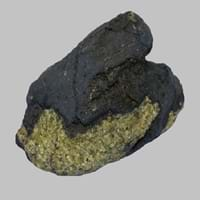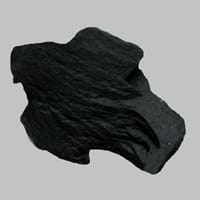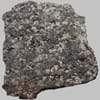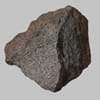Definition
Basanite is a black basaltic rock which mainly contains plagioclase, augite, olivine and nepheline and is formerly used as a touchstone
Lignite is a soft brownish coal which shows traces of plants and is intermediate between bituminous coal and peat
Discoverer
Unknown
Unknown
Etymology
From Latin basanites + -ite
From French, Latin lignum wood + -ite1
Class
Igneous Rocks
Sedimentary Rocks
Sub-Class
Durable Rock, Hard Rock
Durable Rock, Soft Rock
Group
Not Applicable
Not Applicable
Other Categories
Fine Grained Rock, Opaque Rock
Coarse Grained Rock, Fine Grained Rock, Medium Grained Rock, Opaque Rock
Texture
Aphanitic to Porphyritic
Amorphous, Glassy
Color
Black, Brown, Green, Grey, Red, White
Black, Brown, Dark Brown, Grey, Light to Dark Grey
Durability
Durable
Durable
Appearance
Glassy or Pearly
Veined or Pebbled
Interior Uses
Decorative Aggregates, Homes
Not Yet Used
Exterior Uses
As Building Stone, Garden Decoration, Office Buildings
Not Yet Used
Other Architectural Uses
Whetstones
Not Yet Used
Construction Industry
Arrowheads, Construction Aggregate, Cutting Tool, Spear Points
for Road Aggregate, Steel Production
Medical Industry
Not Yet Used
Not Yet Used
Antiquity Uses
Artifacts, Monuments
Not Yet Used
Commercial Uses
As a touchstone, Creating Artwork, Gemstone, In fire-starting tools, Manufacture of tools, Metallurgical Flux, Jewelry, To ignite fire, Used in flintlock firearms
Electricity Generation
Types
Nepheline-Basanite, Analcite-Basanite and Leucite-Basanite
Xyloid Lignite or Fossil Wood and Compact Lignite or Perfect Lignite
Features
Clasts are smooth to touch, Easily splits into thin plates, Has High structural resistance against erosion and climate, Used as a touchstone
Generally rough to touch, Helps in production of Heat and Electricity, Used as fossil fuel
Archaeological Significance
Monuments
Used
Not Yet Used
Famous Monuments
Data Not Available
Not Applicable
Sculpture
Not Yet Used
Not Yet Used
Famous Sculptures
Not Applicable
Not Applicable
Pictographs
Not Used
Used
Petroglyphs
Not Used
Used
Figurines
Not Yet Used
Not Yet Used
Formation
Basanite is a fine-grained, hard rock that forms when bits of lava shoot out of volcanoes.
Coal formation takes place due to accumulation of plant debris in a swamp environment. The Coal formation process continues, as peat turns into lignite brown or black coal at increasing heat and pressure.
Mineral Content
Augite, Feldspar, Ilmenite, Olivine, Plagioclase
Not Available
Compound Content
Potassium Oxide, Sodium Oxide, Silicon Dioxide
Carbon, Hydrogen, Nitrogen, Oxygen, Sulphur
Types of Metamorphism
Burial Metamorphism, Cataclastic Metamorphism, Contact Metamorphism, Regional Metamorphism
Not Applicable
Types of Weathering
Chemical Weathering, Mechanical Weathering
Biological Weathering, Chemical Weathering, Mechanical Weathering
Types of Erosion
Chemical Erosion, Coastal Erosion, Glacier Erosion, Sea Erosion, Water Erosion, Wind Erosion
Chemical Erosion, Water Erosion, Wind Erosion
Grain Size
Fine Grained
Medium to Fine Coarse Grained
Fracture
Uneven, Splintery or Conchoidal
Conchoidal
Porosity
Highly Porous
Highly Porous
Luster
Waxy and Dull
Dull to Vitreous to Submetallic
Cleavage
Non-Existent
Non-Existent
Toughness
1.5
Not Available
Specific Gravity
2.5-2.8
1.1-1.4
Transparency
Translucent to Opaque
Opaque
Density
2.7 g/cm3
800-801 g/cm3
Resistance
Heat Resistant, Impact Resistant, Pressure Resistant, Wear Resistant
Heat Resistant
Deposits in Eastern Continents
Asia
Not Yet Found
Bangladesh, Burma, Cambodia, China, India, Indonesia, Kazakhstan, Malaysia, Mongolia, Pakistan, Turkey, Vietnam
Africa
Uganda
Botswana, Kenya, Morocco, Mozambique, South Africa, Tanzania
Europe
Germany, Hungary, Italy, Spain
Belgium, Bulgaria, England, France, Germany, Greece, Hungary, Kosovo, Netherlands, Norway, Poland, Romania, Serbia, Slovakia, Slovenia, The Czech Republic, Ukraine, United Kingdom
Others
Greenland, Mid-Atlantic Ridge
Not Yet Found
Deposits in Western Continents
North America
USA
Canada, Mexico, USA
South America
Bolivia, Brazil
Brazil, Chile, Colombia, Venezuela
Deposits in Oceania Continent
Australia
New South Wales, New Zealand, Queensland, South Australia, Western Australia
New South Wales, Queensland, Victoria
All about Basanite and Lignite Properties
Know all about Basanite and Lignite properties here. All properties of rocks are important as they define the type of rock and its application. Basanite belongs to Igneous Rocks while Lignite belongs to Sedimentary Rocks.Texture of Basanite is Aphanitic to Porphyritic whereas that of Lignite is Amorphous, Glassy. Basanite appears Glassy or Pearly and Lignite appears Veined or Pebbled. The luster of Basanite is waxy and dull while that of Lignite is dull to vitreous to submetallic. Basanite is available in black, brown, green, grey, red, white colors whereas Lignite is available in black, brown, dark brown, grey, light to dark grey colors. The commercial uses of Basanite are as a touchstone, creating artwork, gemstone, in fire-starting tools, manufacture of tools, metallurgical flux, jewelry, to ignite fire, used in flintlock firearms and that of Lignite are electricity generation.










